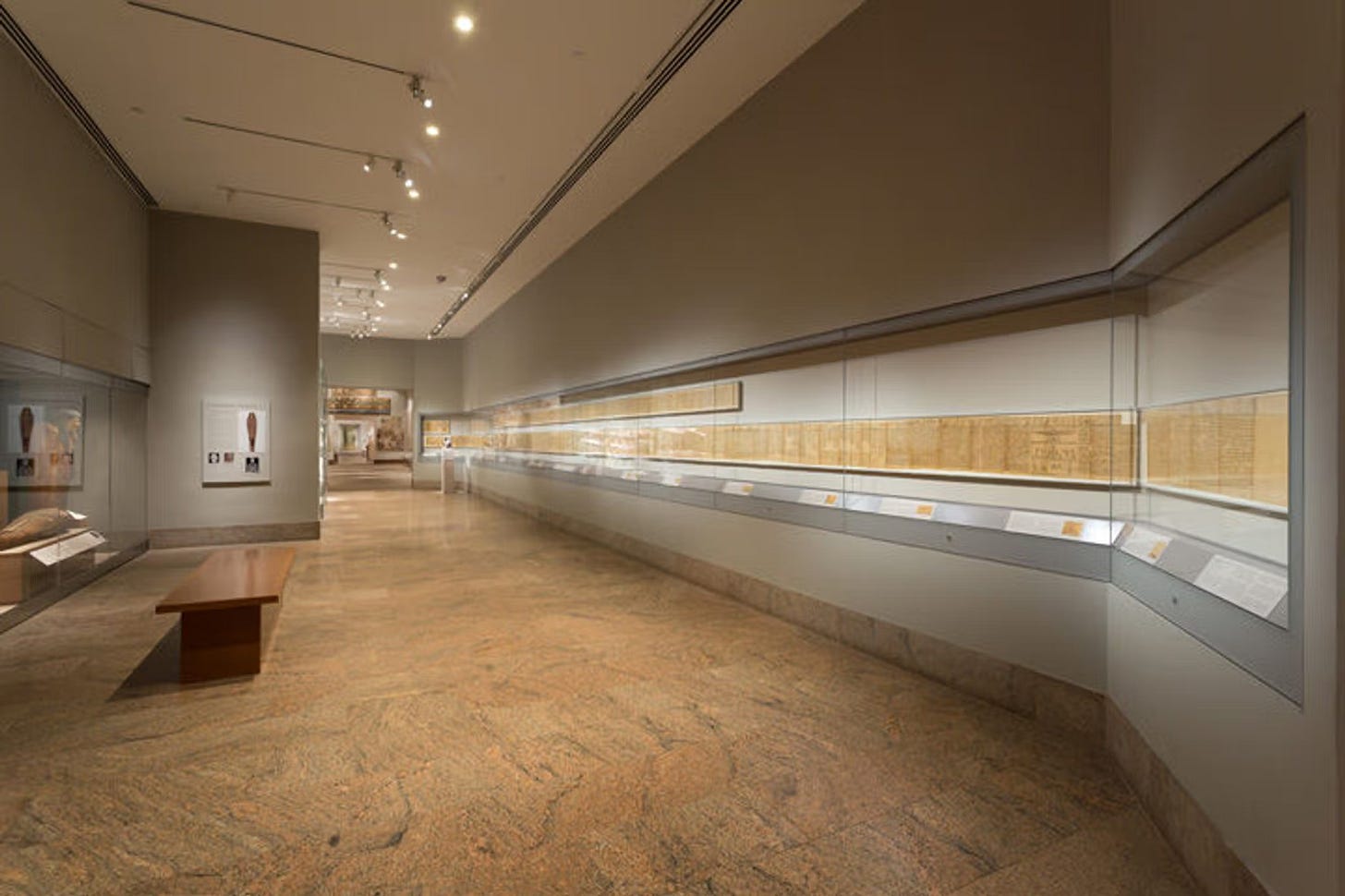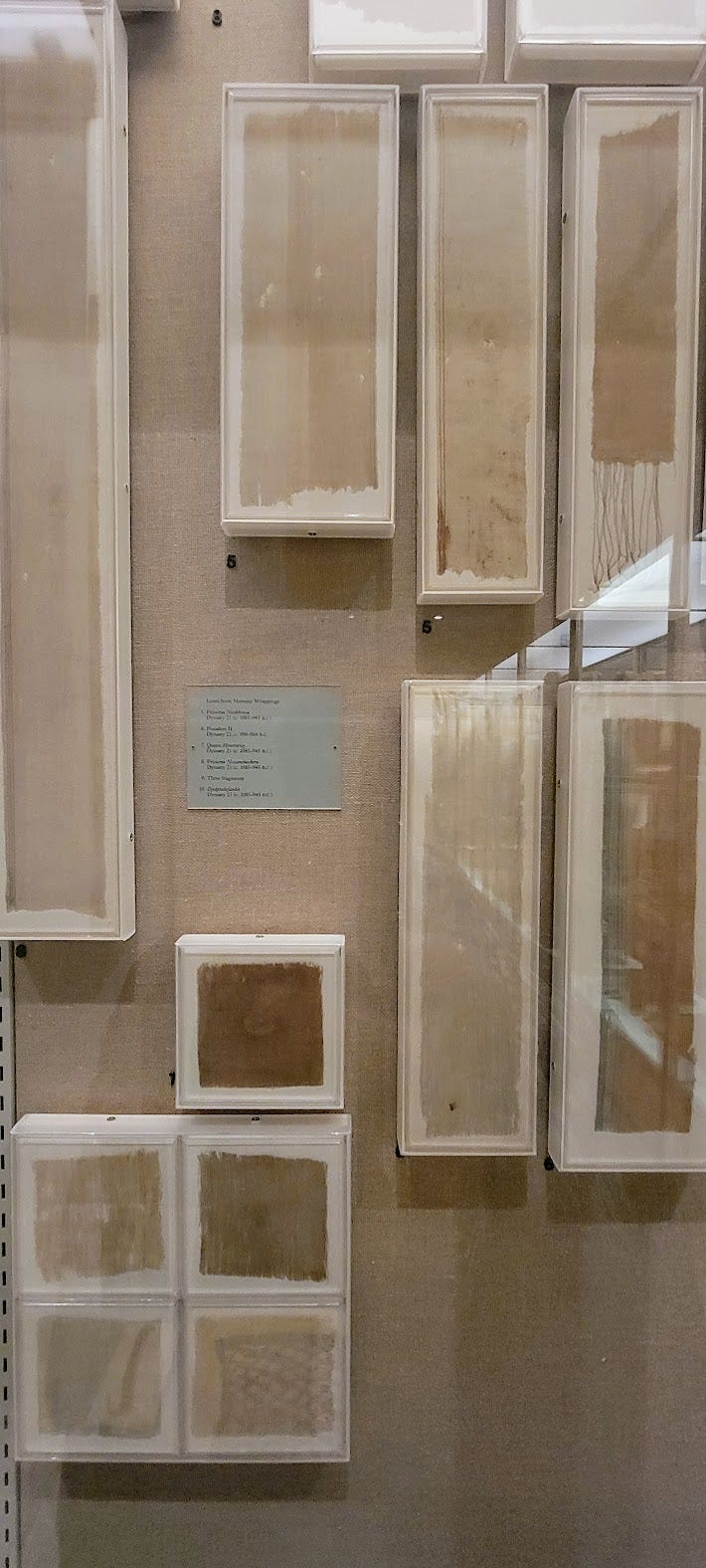Incredibly, the Metropolitan Museum of Art has the complete Egyptian Book of the Dead as inscribed for Imhotep - priest of the sky god Horus. The afterlife was understood as accessible to all who could afford their own Book of the Dead, a guidebook of magical funerary writing providing the spells necessary for the elaborate trials faced to earn eternal life.
What I found moving was how resonant some of the instructions from this text were with ideas I’ve been studying in my Buddhist hermeneutics courses.
“There is no happiness for the soul in the external worlds since these are perishable…”
The first and second noble truths acknowledge the truth of suffering and the cause of suffering as the temporary nature of our ability to enjoy what we want or be free from what we don’t want.
“Never forget, the words are not the reality, only reality is reality; picture symbols are the idea, words are confusion.”
The Buddha often talked of people learning for themselves - not to believe him or anything another teacher had said simply because they had said it, but to lean into their own experience of the teachings to see what meaning could be made of them.
“There are two roads which human beings can follow, one of wisdom and the other of ignorance. The path of the masses is generally the path of ignorance which leads them into negative situations, thoughts and deeds. These in turn lead to ill health and sorrow in life. The other road is based on wisdom and it leads to health, true happiness and enlightenment.”
In Buddhism ignorance (Pali: avijjā) is underscored as one of three poisons that keep beings caught in the cycle of suffering due to a misperception of the nature of reality.
All of these teachings are wise words for someone aiming to become a peaceful ancestor as opposed to haunted ‘hungry ghost’.
I was smiling to imagine what the world would look like if designers of all kinds imagined how their products and environments could prepare a person for an afterlife and if this would contribute to a greater or lesser experience of haunting on the planet.
I’ve had some requests to share some of the scholarship I’m working on here in seminary and so in the weeks to follow, I will post some research I’ve started on the Buddha’s Indigenous roots and how this and the tree and serpent worshiping practices that would have been familiar to him, shaped his thinking on Buddhist concepts like dependent origination (everything is caused by something else) and karma. I think this is important to include here because I’m invested in exploring ways of making which, while including human concerns, do not centralize them. I think it is safe to say that the planet has reached a critical point of harm with regard to the degree that which human concerns have been centered. One ethic I hold dear at Cazimi Studio is that successful projects are able to touch the experience of much much more than just the human beings who come into contact with the work.
For those of you for whom academic writing feels dense, or not like your usual cup of tea, I totally get it and will post other content that works alongside the writing thematically. I will say, though, that I pride myself on having a pretty accessible academic writing style, so who knows, you might find it interesting! As an artist, I think it is important to create knowledge in as many forms as we can, and this includes writing about the questions that emerge from our unique sensibilities.
To those of you who are new subscribers, welcome! I welcome your comments and questions on any of the posts here, current or past. This is a space where I get to share my thinking and research behind my practice rather than just the finished work or event for people to come and see. I believe that curiosity and attention are the two most valuable currencies we have to share with each other, so I thank you for sharing yours with me <3



